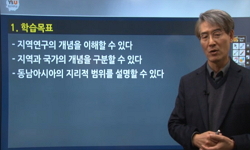Over the last 50 years in the late 20th century had been history of opposition and conflicts between East and West camps represented by USA and Russia. On the other hand, next 21th century has been expected that period of contend for supremacy between...
http://chineseinput.net/에서 pinyin(병음)방식으로 중국어를 변환할 수 있습니다.
변환된 중국어를 복사하여 사용하시면 됩니다.
- 中文 을 입력하시려면 zhongwen을 입력하시고 space를누르시면됩니다.
- 北京 을 입력하시려면 beijing을 입력하시고 space를 누르시면 됩니다.
부가정보
다국어 초록 (Multilingual Abstract)
Over the last 50 years in the late 20th century had been history of opposition and conflicts between East and West camps represented by USA and Russia. On the other hand, next 21th century has been expected that period of contend for supremacy between USA, dominating nation of the world and China, securing status by fast economic growth. Faster than original expectation, aspect of china in all field raised strategic dilemma to several countries of Southeast Asia which would be the first stage of competition between USA and China. Now Southeast Asia is target that USA and China are pursuing aggressive policy involvement. It gathers attention how the Policy targeting Southeast Asia by USA and China will develop, and both sides will interact, and Southeast Asia region and each countries deal with two of them. It is expected that there will be policy reconsidering about Southeast Asia by USA and China due to new government of USA leading by D. Trump and many prospects are already made. Nevertheless there will be microscopic about southeast Asia policy, it is not expected that entails shit of focus targeting Asia. USA prefers status quo to show the leadership of South East area continuously and, China constructed new order of area. China wants to raise it’s voice to the world order. Specifically, at the subregional level in Southeast Asia, ASEAN’s increasingly sophisticated regional security mechanisms, and the competition and cooperation relationships among extra-regional greatpowers are the factors making possible the gradual shift in strategies of Southeast Asian countries away from bandwagon strategies, towards a preferencefor equilibrium strategies.
다국어 초록 (Multilingual Abstract)
冷戰後,東南亞國家作爲一個整體被認爲傾向在域外大國間采取大國平衡戰略。在中國崛起、亞太權力發生轉移的背景下,本文通過細化分析每個國家的對外戰略取向發現,東南亞的不同國家...
冷戰後,東南亞國家作爲一個整體被認爲傾向在域外大國間采取大國平衡戰略。在中國崛起、亞太權力發生轉移的背景下,本文通過細化分析每個國家的對外戰略取向發現,東南亞的不同國家在域外大國中美之間的戰略取向其實是不同的。大部分國家選擇在中美之間保持戰略平衡,也有一部分國家在中美之間選擇追隨其中的一方。每個國家的戰略選擇都受自身條件和外部環境的雙重影響,所做出的戰略選擇也是一定條件下最合邏輯的選擇。東南亞國家在崛起國中國與霸權國美國之間的戰略取向也越來越清晰。“制衡”不可取,“追隨”代價大。更多的東南亞國家如緬甸和菲律賓從“追隨”域外大國的陣營加入“大國平衡”的陣營,“大國平衡”逐漸成爲更多東南亞國家維護戰略利益的最優選擇。領土爭端、政治體制、貿易相互依賴程度以及霸權盟友的可獲得性是影響東南亞國家對崛起國和霸權國戰略取向的四個單元因素,它們塑造了東南亞國家可能的戰略行爲,其中的任何一個發生變化都可能改變其戰略取向。但是,考慮到次地區層次上面臨的安全風險以及體系層面的戰略環境,任何戰略取向的改變都需要一定的地區和體系條件。 在東南亞具體的次地區環境中,東盟逐漸成熟的地區安全機制以及域外大國的競合型關系爲更多東南亞國家逐漸放棄“追隨”戰略轉而偏好“大國平衡” 戰略提供了可能。
참고문헌 (Reference)
1 韋宗友, "美國南海政策新發展與中美亞太共處" (6) : 2016
2 劉務, "緬甸獨立後外交政策的演變與中緬關系的發展" (1) : 2010
3 劉務, "緬甸外交政策的新調整:從對華友好到大國平衡外交" (2) : 2007
4 李益波, "淺析美柬關系的新變化" (11) : 2014
5 劉若楠, "次地區安全秩序與小國的追隨戰略" (11) : 2017
6 楊保筠, "柬埔寨政黨政治的發展及其特點" (1) : 2007
7 賈力楠, "東盟沖突管理方式:概念、挑戰與變革" (6) : 2014
8 唐奇芳, "東盟國家TPP政策探析" (4) : 2012
9 周方冶, "東南亞國家政治多元化及其對一帶一路建設的影響" (4) : 2017
10 劉若楠, "東南亞國家對沖戰略的動因(1997~2005)" 清華大學 2016
1 韋宗友, "美國南海政策新發展與中美亞太共處" (6) : 2016
2 劉務, "緬甸獨立後外交政策的演變與中緬關系的發展" (1) : 2010
3 劉務, "緬甸外交政策的新調整:從對華友好到大國平衡外交" (2) : 2007
4 李益波, "淺析美柬關系的新變化" (11) : 2014
5 劉若楠, "次地區安全秩序與小國的追隨戰略" (11) : 2017
6 楊保筠, "柬埔寨政黨政治的發展及其特點" (1) : 2007
7 賈力楠, "東盟沖突管理方式:概念、挑戰與變革" (6) : 2014
8 唐奇芳, "東盟國家TPP政策探析" (4) : 2012
9 周方冶, "東南亞國家政治多元化及其對一帶一路建設的影響" (4) : 2017
10 劉若楠, "東南亞國家對沖戰略的動因(1997~2005)" 清華大學 2016
11 馬博, "杜特爾特“疏美親中”政策評析:國家利益與個人偏好" (4) : 2017
12 方軍祥, "從雙邊主義到多邊主義:東盟安全合作模式的轉變" (4) : 2005
13 韋民, "小國與國際安全" 北京大學出版社 2016
14 "國別貿易報告:馬來西亞" 中國商務部國際經濟貿易研究院 (1) : 2018
15 高程, "周邊環境變動對中國崛起的挑戰" (5) : 2013
16 "印尼投資委認爲中國勢必成爲印尼最大投資國" 中國商務部
17 李金明, "南海問題現狀及其應對" (8) : 2012
18 劉豐, "制衡霸權:結構壓力, 霸權正當性與大國行爲" 南開大學 2009
19 "中國躍升爲老撾最大投資國" 新華網
20 袁鵬, "世界新秩序呼喚中美新型大國關系" 2016
21 Richard Javad Heydarian, "What Duterte Portends for Philippine Foreign Policy" Nanyang Technological University (123) : 2016
22 Tina S. Clemente, "Understanding the Economic Diplomacy between the Philippines and China" 7 (7): 2016
23 Yukiko Nishikawa, "The ‘ASEAN Way’ and Asian Regional Security" 35 (35): 2007
24 Kuik Cheng-Chwee, "The Essence of Hedging : Malaysia and Singapore’s Response to a Rising China" 30 (30): 2008
25 Shiping Tang, "Reputation, Cult of Reputation, and International Conflict" 14 : 2005
26 Ramses Amer, "Regional Conflict Management : Challenges of the Border Disputes of Cambodia, Laos, and Vietnam" 2 (2): 2009
27 Ruonan Liu, "Regime Security First: Explaining Vietnam’s Security Policies towards the US and China (1992~2012)" 28 (28): 2015
28 Christina Fink, "Living Silence : Burma under Military Rule" White Lotus Press 2001
29 International Crisis Group, "China’s Myanmar Dilemma" 2009
30 Dezan Shira, "Cambodia’s FDI Outlook for 2017 : Understanding the Challenges and Opportunities ahead" ASEAN 2017
31 Robert Ross, "Balance of Power Politics and the Rise of China : Accommodation and Balancing in EastAsia" 15 (15): 2006
동일학술지(권/호) 다른 논문
-
중국의 국가안보전략 변화: 총체적 국가안보관(總體國家安全觀)을 중심으로
- 대한정치학회
- 유동원
- 2019
- KCI등재
-
난중일기에 나타난 충무공 이순신 장군 리더십의 현대적 적용 소고
- 대한정치학회
- 황보식
- 2019
- KCI등재
-
- 대한정치학회
- 정귀화
- 2019
- KCI등재
-
- 대한정치학회
- 박광득
- 2019
- KCI등재
분석정보
인용정보 인용지수 설명보기
학술지 이력
| 연월일 | 이력구분 | 이력상세 | 등재구분 |
|---|---|---|---|
| 2028 | 평가예정 | 재인증평가 신청대상 (재인증) | |
| 2022-01-01 | 평가 | 등재학술지 유지 (재인증) |  |
| 2019-01-01 | 평가 | 등재학술지 유지 (계속평가) |  |
| 2016-01-01 | 평가 | 등재학술지 선정 (계속평가) |  |
| 2015-01-01 | 평가 | 등재후보학술지 유지 (계속평가) |  |
| 2013-01-01 | 평가 | 등재후보학술지 유지 (기타) |  |
| 2012-03-01 | 평가 | 등재후보로 하락 (기타) |  |
| 2012-01-01 | 평가 | 등재후보학술지 유지 (기타) |  |
| 2009-01-01 | 평가 | 등재 1차 FAIL (등재유지) |  |
| 2006-01-01 | 평가 | 등재학술지 선정 (등재후보2차) |  |
| 2005-01-01 | 평가 | 등재후보 1차 PASS (등재후보1차) |  |
| 2004-01-01 | 평가 | 등재후보학술지 유지 (등재후보1차) |  |
| 2003-01-01 | 평가 | 등재후보학술지 선정 (신규평가) |  |
학술지 인용정보
| 기준연도 | WOS-KCI 통합IF(2년) | KCIF(2년) | KCIF(3년) |
|---|---|---|---|
| 2016 | 0.68 | 0.68 | 0.69 |
| KCIF(4년) | KCIF(5년) | 중심성지수(3년) | 즉시성지수 |
| 0.66 | 0.65 | 0.904 | 0.19 |




 KISS
KISS





